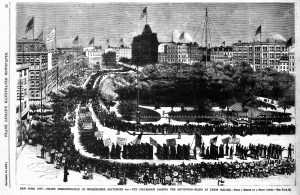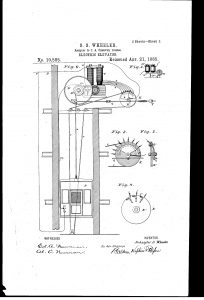Labor Day in the United States is this weekend; September 2nd. In the U.S.,
The History
In the midst of the Second Industrial Revolution, people of all ages, from the young to the old, worked in less than stellar working conditions. This time period was often marked by unsafe conditions and unsanitary facilities. These working conditions facilitated the creation of Labor Day as well as labor unions which sought to end these poor conditions through protests and strikes.
Many, but not all, of these protests became violent. For instance, the parade pictured above was not actually a celebration at all, but rather 10,000 workers banding together, taking unpaid leave from work. Their goal was to march from City Hall to Union Square in New York City in protest for safer working conditions and better pay. This march became a large, annual celebration and continues to this day.
This march became recognized as the first Labor Day and the idea quickly spread among other manufacturing centers in the U.S, with state legislatures passing laws recognizing the holiday. This became the first Labor Day and quickly spread among other manufacturing centers in the U.S, with state legislatures passing laws recognizing the holiday. The catalyst of recognition was the Pullman Railway Strike 12 years later, resulting in the holiday becoming federally acknowledged by U.S. President Grover Cleveland. The originator of the idea of Labor Day, however, is still unknown.
The Patent

Innovation like this provided opportunities for the United States working classes as they built some of our most memorable skylines. It is important that they, along with everyone that works hard every day, are recognized for their labors.
Source
(1) History.com Editors, “Labor Day 2019,” History, A&E Television Networks, (Original: April 13 2010; Updated August 13 2019).






